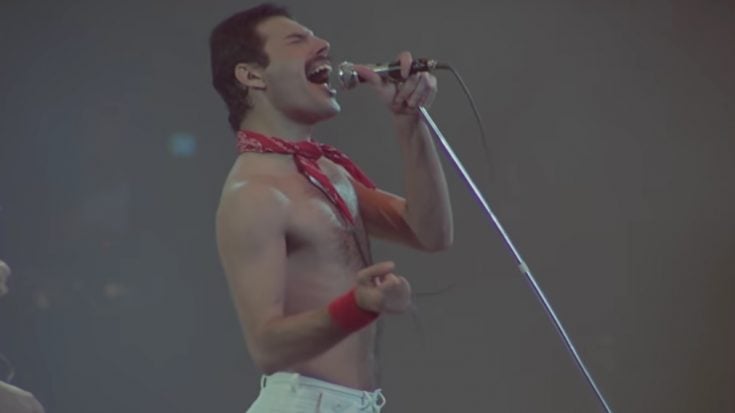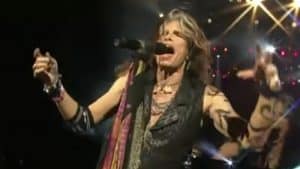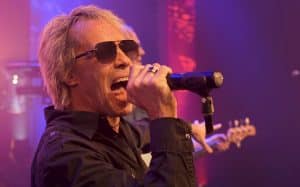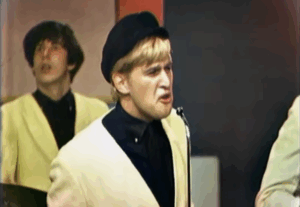10 Classic Rock Artists Who Don’t Musically Make Mistakes

via Queen Official / YouTube
Time has a way of catching even the most enduring legends. As 2025 continues to unfold, the rock and metal world has already been met with a string of painful goodbyes—each one a reminder of how deeply these musicians shaped the sounds and stories of generations. From trailblazers to unsung heroes, their departures mark the end of irreplaceable chapters in music history.
These weren’t just names in liner notes or faces on record sleeves. Each of them brought something distinct to the stage—be it a sound, a vision, or an energy that turned ordinary notes into cultural touchstones. Whether they stood front and center or quietly redefined their roles behind the scenes, their impact resonates in every riff, lyric, and live show that came after.
Some were pioneers of entire movements. Others quietly held their bands together with unmatched skill. From Garth Hudson’s sweeping contributions to The Band’s iconic sound, to the gritty magic of John Sykes’ guitar work, to Mike Peters’ defiant voice in the face of illness—2025 has already asked rock fans to say goodbye to more than a few giants.
1. Pino Palladino
Not every artist needs to be in the spotlight to make a lasting impact. While it’s easy to celebrate those soaking up applause at center stage, it’s often the musicians behind the scenes who hold the whole thing together. Pino Palladino may not be a household name to casual listeners, but any pop or rock track he’s touched in the past few decades carries the unmistakable groove of a master at work.
From his early days in fusion circles to his work with Paul Young, Jeff Beck, D’Angelo, and John Mayer, Palladino has always been about serving the song. He’s not interested in showboating. Instead, he delivers the exact tone and rhythm the track needs—nothing more, nothing less. Whether it’s a sultry neo-soul jam or a stripped-down acoustic ballad, he blends in perfectly without ever fading into the background.
Plenty of bassists can follow a beat, but Palladino adds subtle textures that elevate the entire song. He locks in with the drummer like a technician, giving the rhythm section a heartbeat that’s impossible to ignore. And even if the average listener doesn’t realize they’re hearing him, seasoned musicians know: sharing a stage or studio with Pino means stepping up your game.
2. Christine McVie
Being in Fleetwood Mac was rarely smooth sailing. The drama surrounding Rumours is legendary—broken relationships, raw emotions, and a band trying to stay functional while unraveling. While Stevie Nicks turned to mysticism and Lindsey Buckingham funneled his frustration into jagged melodies, Christine McVie was the steadying force, crafting heartbreakers with a calm, unshakable grace.
Starting with blues rock roots, Christine transitioned into one of the most dependable pop songwriters of her era. She didn’t always take center stage, but her melodic instincts were undeniable. Songs like “Everywhere” and “Little Lies” didn’t just pad out albums—they were the backbone of Fleetwood Mac’s late-period success, showcasing a level of craftsmanship that rarely missed the mark.
Even when the band’s quality dipped—Time, for instance—McVie remained the group’s foundation. Her departure left a noticeable gap, and though Say You Will marked a return for many members, Christine’s absence kept it from being the full-circle comeback fans hoped for. Her touch brought polish and warmth to even the messiest moments, and that’s not something easily replaced.
3. Freddie Mercury
Playing to a stadium full of people takes more than just talent—it requires presence. Most musicians work their way up to that kind of command over time. Freddie Mercury, though, seemed born for it. Offstage, he could be quiet and even guarded, but once the lights hit and the crowd roared, something clicked, and he transformed.
His Live Aid performance has become a gold standard for live rock excellence. Effortlessly bouncing between piano, guitar, and high-flying vocal runs, he didn’t just perform—he dominated. What seemed impossible for most was simply another day at the office for Mercury. The contrast between his private shyness and public boldness made his confidence on stage all the more electrifying.
What made Freddie special wasn’t just charisma. It was the sheer musicality behind it all. Whether crafting a six-minute epic like “Bohemian Rhapsody” or recording emotionally raw vocals during his final days, he never backed down from a challenge. He didn’t just meet expectations—he rewrote what it meant to be a frontman.
4. Jeff Lynne
Producers have the final say when crafting an album, and Jeff Lynne has rarely, if ever, made a wrong call. From his early days with The Move to leading ELO, Lynne developed a sound that was both retro and futuristic, fusing classic rock with strings, synths, and spotless harmonies. Somehow, it all felt effortless.
With each release, Lynne refined the formula—borrowing the best from his heroes and filtering it through his own musical lens. Whether layering vocals like the Beach Boys or constructing arrangements worthy of Lennon and Orbison, he knew exactly what he wanted a track to sound like and how to get it there. His perfectionism didn’t hinder creativity; it enabled it.
Lynne’s reputation eventually brought him into the Beatles’ orbit, where he helped resurrect “Free As a Bird” and “Real Love.” Being trusted with those final Beatles recordings is about as close as rock music gets to royalty. And even in recent collaborations—from Tom Petty to Regina Spektor—he’s never dropped the ball. The sound is always unmistakably Jeff Lynne: polished, melodic, and mistake-free.
5. Prince
Most artists fit into genres. Prince exploded them. While fans and critics tried to slot him into boxes—rock, funk, R&B—he blurred lines so completely that his discography became its own musical language. And even as he jumped from sound to sound, he never once sounded lost.
Prince’s genius wasn’t just about reinvention. Even his throwaway albums—ones he reportedly disliked or released out of obligation—still had moments that could outshine an entire band’s career. Tracks from Chaos and Disorder or The Rainbow Children might not have topped charts, but they revealed a musician always pushing forward, always searching.
His peak albums—Purple Rain, Sign o’ the Times, 1999—are towering achievements, but they only scratch the surface. Prince understood that making mistake-free music wasn’t about playing it safe. It was about staying ten steps ahead, pulling influence from everywhere, and making sure that every second on tape mattered. He didn’t just avoid missteps. He danced around them like they didn’t exist.
6. George Harrison
It’s easy to say that any Beatle could earn a spot on a list like this. During their prime, the Fab Four operated like a single creative unit, but once they stepped into their solo careers, it became clear just how much talent had been packed into that group. While Lennon and McCartney were often front and center, George Harrison quietly proved himself as one of rock’s most spiritually and musically grounded artists.
Unlike some of his peers, Harrison didn’t make music for acclaim or attention—he made it because it meant something to him. His post-Beatles work, especially All Things Must Pass and Thirty Three & 1⁄3, shows an artist deeply connected to his craft, delivering lush arrangements and emotionally resonant songs that reflected his spiritual journey and inner peace. His signature slide guitar wasn’t just a sound—it was a language of its own.
Even when collaborating outside of his solo albums, Harrison’s touch was unmistakable. Whether adding guitar lines to Badfinger or Belinda Carlisle, there was a gentle brilliance to everything he played. His life was shaped by a search for something deeper, and while relationships came and went, his bond with music never wavered. With a guitar in his hands, Harrison didn’t just play—he communicated something divine.
7. Joni Mitchell
As the idealism of the ’60s faded, the artists who stayed behind weren’t always the loudest—they were the ones who dug the deepest. Joni Mitchell didn’t need elaborate production or flashy arrangements. With a few open-tuned chords and the right turn of phrase, she could shift the emotional landscape of a room and make listeners sit in stillness and listen.
From the start, Mitchell wasn’t like the others. While many singer-songwriters leaned on simple folk structures, she created complex harmonic landscapes with unconventional tunings and sophisticated lyrics. Her songs weren’t written for mass appeal—they were windows into her soul, exploring heartbreak, self-doubt, and existential questions in a way that felt raw but intentional.
Even when her music veered away from the mainstream, Mitchell never made a lazy record. Each release offered a new perspective, a fresh palette, and an invitation to understand music—and emotion—more deeply. She didn’t write songs just to be heard; she wrote them to be experienced. And if you stuck with her long enough, you came out a better listener and a more thoughtful musician.
8. Eddie Van Halen
The electric guitar may be a modern invention, but Eddie Van Halen made it feel like ancient magic. Before him, flashy solos were the domain of prog rockers and blues wailers. But Eddie brought a new kind of fire—turning techniques like tapping and dive bombs into foundational parts of the rock guitar vocabulary. He wasn’t just showing off. He was rewriting what was possible.
His breakout moment came with “Eruption,” a solo that lasted under two minutes but redefined the instrument overnight. Fans didn’t just admire his speed—they were awestruck by his precision, his tone, and his joy. This wasn’t about being the fastest player alive. It was about expressing something powerful in a way no one else could.
Every Van Halen album was a new playground for Eddie’s ideas. From percussive neck tapping on “Mean Street” to flamenco-inspired licks on “Little Guitars,” he constantly explored new ways to say more with six strings. It wasn’t technical skill alone that set him apart—it was the love he poured into every note. He didn’t practice to impress. He played because the guitar was an extension of who he was.
9. Brian Wilson
Rock and roll wasn’t supposed to be this intricate. In the early days, it was about energy, attitude, and simplicity. But Brian Wilson had other plans. Raised on doo-wop and surf rock, he took the tools of pop music and built entire worlds—elevating teenage anthems into emotional symphonies that still hold up as some of the most beautifully constructed pieces in rock history.
Even before Pet Sounds, Wilson had been crafting layered, melodic masterpieces. But that album—and tracks like “Good Vibrations”—marked a seismic shift. He wasn’t just writing about cars and waves anymore; he was unpacking loneliness, love, and longing with a sensitivity that rivaled classical composers. These songs weren’t just catchy—they were orchestrated expressions of the soul.
Not every lyric had to be profound, but that didn’t matter. The emotion was in the harmonies, in the arrangements, in the way Wilson could make an entire band sound like a single, aching voice. His brilliance wasn’t about being the loudest or the boldest. It was about listening—to the music, to the world, and to what made people feel connected. That’s what made his work flawless.
10. Jimi Hendrix
Guitars have always been central to rock music’s image, but no one fused image, soul, and innovation like Jimi Hendrix. While others strummed or shredded, Hendrix turned the instrument into an extension of his consciousness. He didn’t just play notes—he bent them, twisted them, and transformed them into something wild and untamed.
Arriving in England as an outsider, Hendrix quickly became the insider everyone watched. His performances weren’t just concerts—they were revelations. Using feedback, wah pedals, and sheer dexterity, he unlocked tones no one had thought possible. Whether channeling sorrow on “The Wind Cries Mary” or lighting up the sky with “Purple Haze,” Hendrix made the guitar sound like it was speaking in tongues.
Despite the short span of his career, his influence is eternal. Musicians like Eddie Van Halen, Prince, and Jeff Beck didn’t just admire Hendrix—they studied him. Because what Hendrix did wasn’t just skill. It was instinct. It was art in real time, flowing out of someone who made even the impossible seem effortless. That’s not something you can learn. That’s something you are.





















